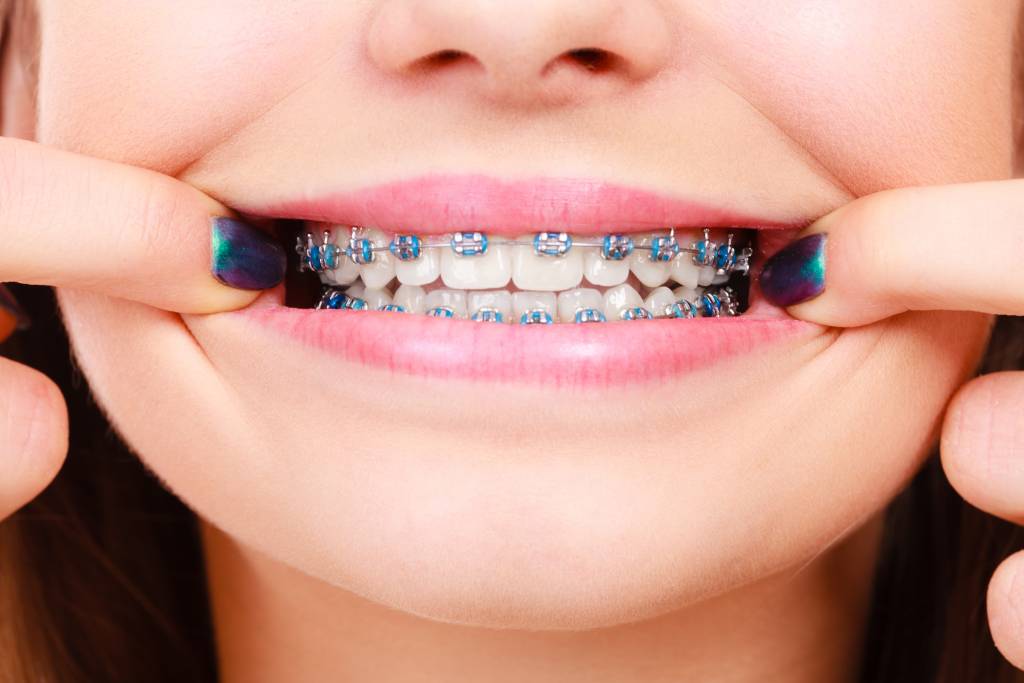Braces are one of the most common orthodontic treatments – and if you happen to have crooked teeth, they could be the perfect solution for a straighter smile. Braces can correct problems like a misaligned bite, crowded teeth, or an incorrectly positioned jaw.
If you suffer from one or more of these problems, or simply want perfectly straight teeth, it’s time to consider braces. There are many benefits to perfecting your smile with braces, and they don’t have to break the bank.
 Why Choose Braces?
Why Choose Braces?
Braces are a fast and effective treatment for many different dental problems. Because braces stay on your teeth all day, every day during treatment, they move your teeth or your jaw into the correct position slowly over time, making adjustments you may not even notice.
Braces usually require monthly visits to the orthodontist for adjustment as your teeth shift. From adjusting wires to adding options like rubber bands that move your jaw into the correct placement, you can expect to see your orthodontist about once each month until your teeth are perfectly aligned.
Although many people worry about the look of traditional metal braces, there’s truly no better option for straight teeth and a great smile. Unlike braces of the past, modern braces are smaller and less conspicuous. You can dress them up with colored bands and choose a new color each time you get the braces adjusted. Because of these changes to the appearance of braces, there’s no need to shy away from going for metal.
Clear aligners, like Invisalign, are popular with many adults who want to hide the fact that they’re straightening their teeth. However, these aligners can cause big problems.
Unlike braces, Invisalign and its similar clear options aren’t permanent. Instead, you place customized plastic trays over your teeth – and you have to remove these trays every time you eat or brush your teeth. Sometimes, people forget to place the aligners back on. Every time you leave these non-permanent “braces” off, your teeth begin to move back into their crooked state.
Additionally, serious problems with tooth position, jaw position or bite alignment can’t be corrected using Invisalign. In these cases, braces are a better choice and will provide the best results. Braces are the most capable option for moving teeth and aligning the entire mouth.
How to Save on Braces
Many people think they can’t afford braces. With a high price tag, braces can cost between $5,000 and $6,000 without insurance, Colgate reports. For many people, this is cost-prohibitive and can lead to a delay in treatment or the decision to skip treatment altogether. But braces don’t have to cost you as much as this – they can be had for less.
Metal braces are the cheapest option at an average of $3,407 to $4,937 according to CostHelper.com. That’s $2,000 or more less than what the average set of clear aligners costs. If you’re still worried about the cost of braces, there are ways to save and cut costs even more.
First, check with your insurance company. Many dental insurance plans do offer a braces or orthodontics allotment, covering services like the cost of braces or the cost of retainers. Others will offer lower prices on orthodontist visits, or even pay for some of your braces.
You should also talk with your orthodontist about the total investment required for treatment and ask about the payment plans he or she has available. These are usually cheaper than paying for braces with a credit card or taking out a loan. You could avoid pricey interest payments and have up to two years to pay for your braces. This gives you the chance to set aside money for payments instead of putting off treatment.
If you’re on a tight budget, have a low income, or don’t have insurance, look into state dental assistance plans or independent dental coverage. Assistance plans help low-income households with expenses such as dental and orthodontic bills, and dental plans can give you access to lower prices at a fraction of the cost of health insurance. Be sure to check if there are restrictions on the dentists and orthodontists you can visit if you choose to take advantage of one of these options.
No matter which option suits you, if you’re considering orthodontic treatment, discuss the available options with your dentist or orthodontist. Research the pros and cons of both braces and other teeth straightening options for your particular condition to choose the option best suited to your lifestyle.
Don’t wait until a small problem gets out of control to start treatment. Your dentist can refer you to an orthodontist who will determine the extent of your condition and make the best recommendations for treatment.
Like anything, it’s always a good idea to be aware of the latest research. We recommend comparing at least 3 or 4 options before making a final decision. Doing a search online is typically the quickest, most thorough way to discover all the pros and cons you need to keep in mind.


